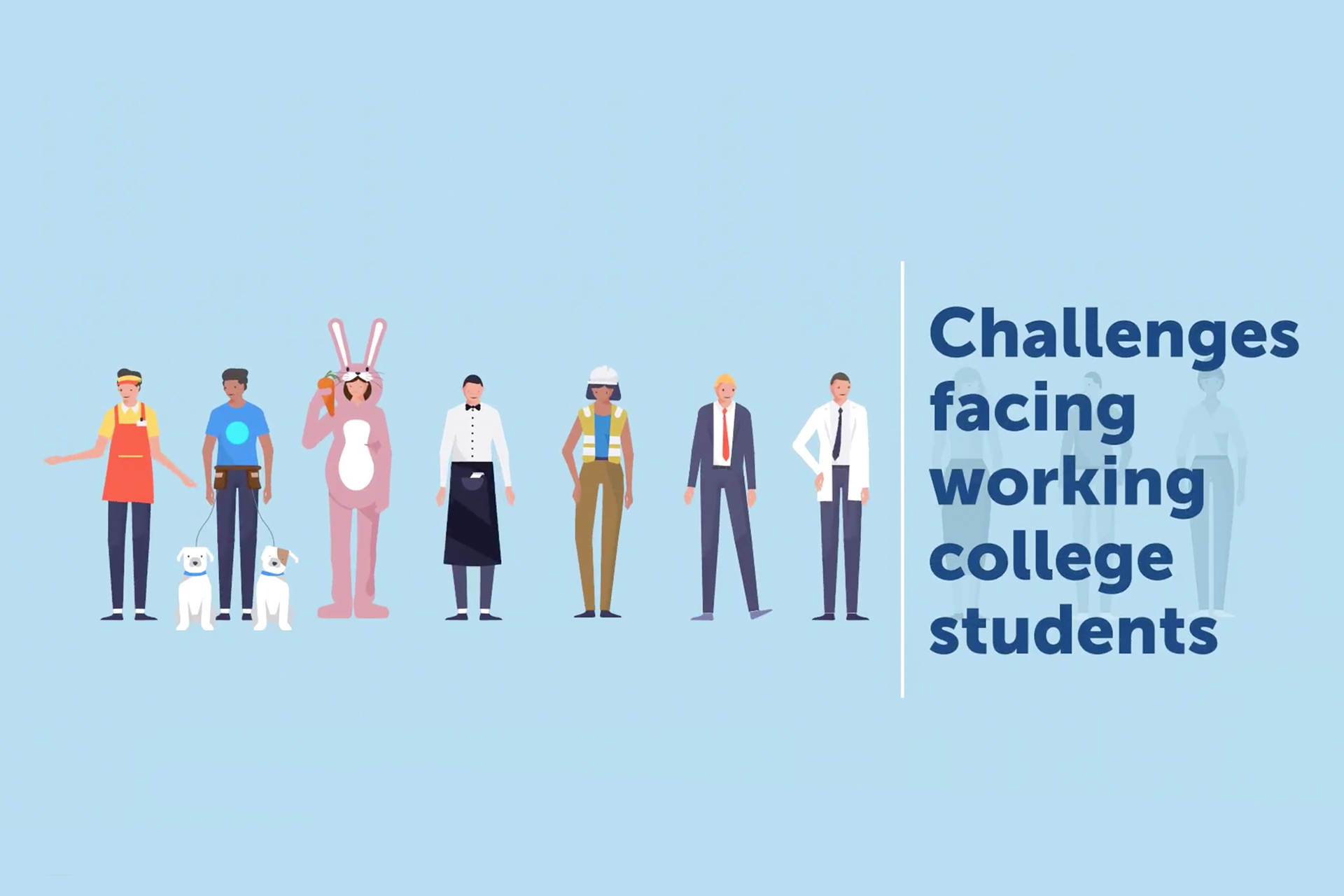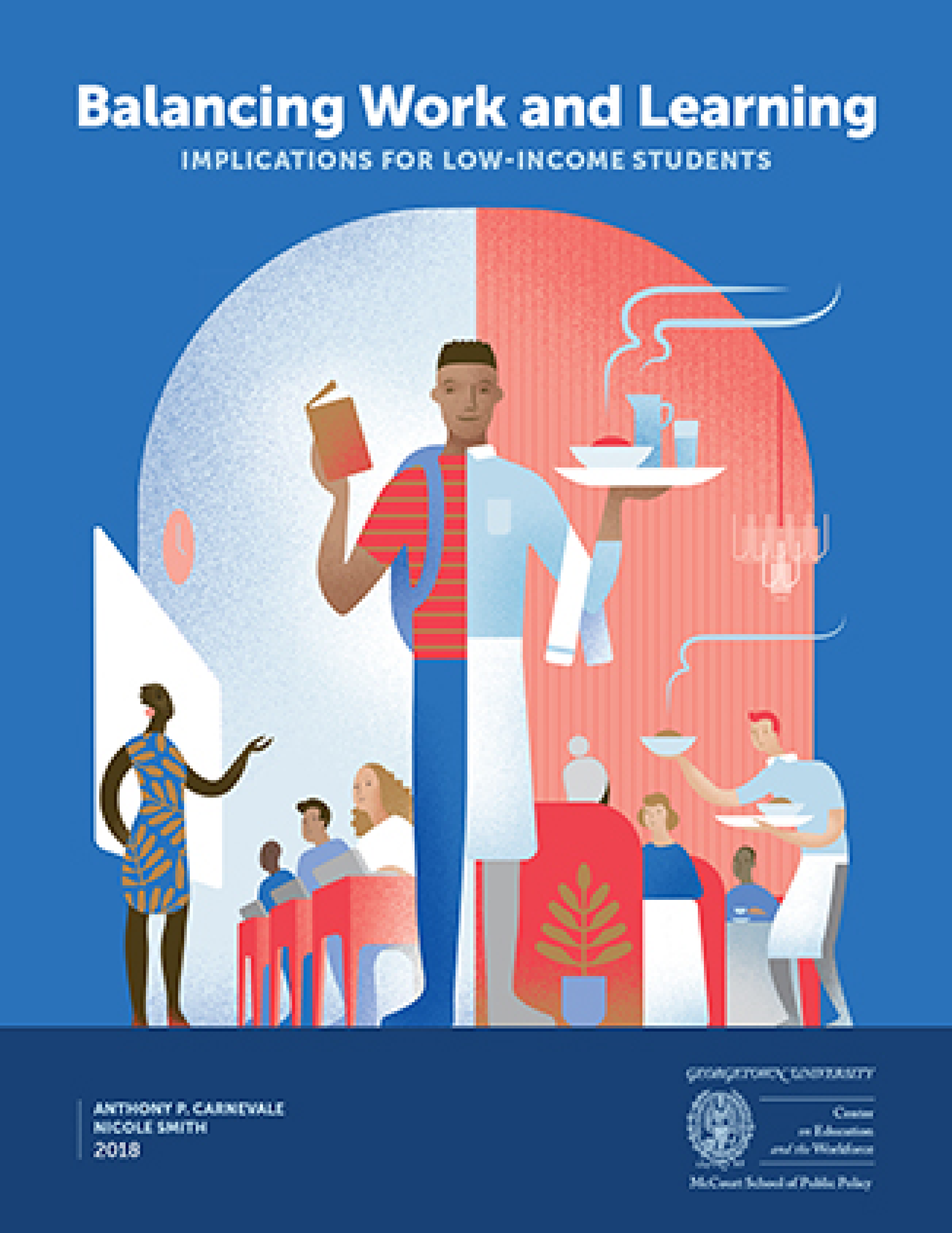Balancing Work And Learning
Implications for Low-Income Students
It has gotten increasingly harder for students to work their way through college, especially for low-income students who face steep challenges when combining work and learning. Students from higher-income families tend to benefit as they work fewer hours in jobs directly related to their fields of study. Low-income working college students often work longer hours, and as a result, are less likely than their higher-income peers to get good grades and attain bachelor’s degrees or any credential at all.
Key Findings
Video
Watch our video to learn more about the challenges that low-income working learners in college face.
Resources
Our report finds that while working and studying generally helps students from higher-income families, low-income students face steeper challenges when combining work and college.


